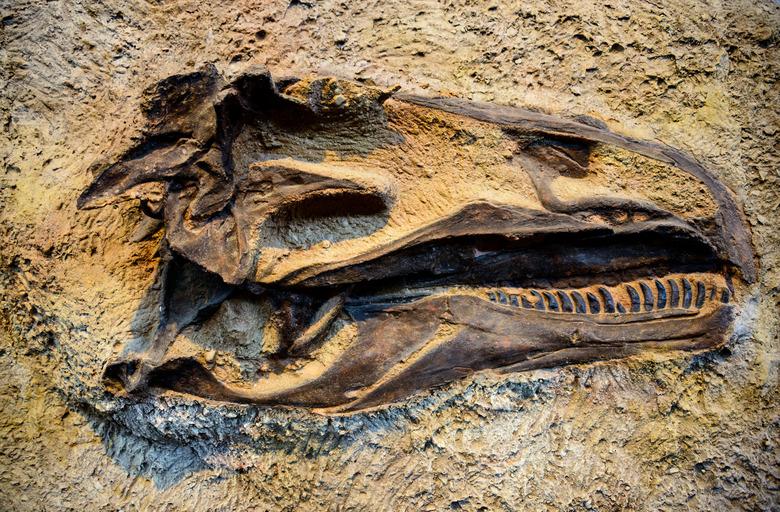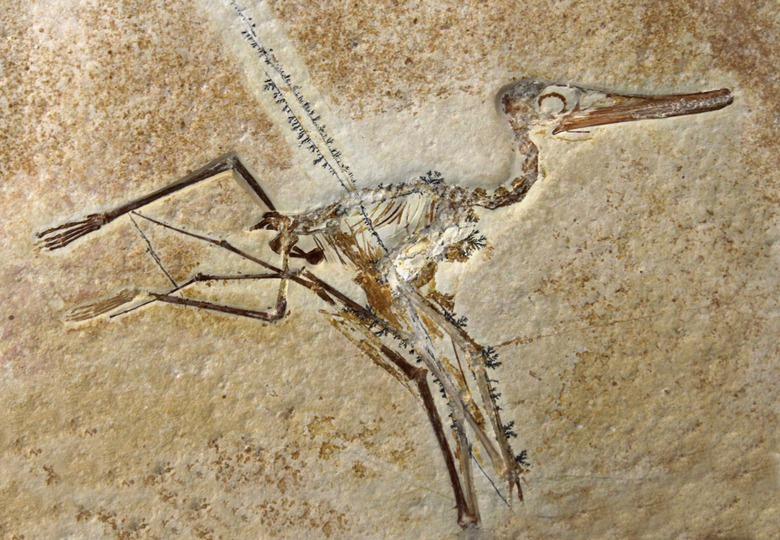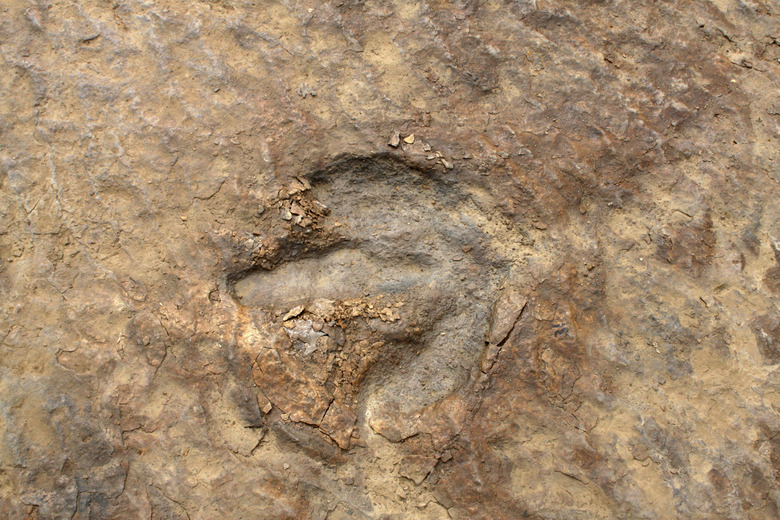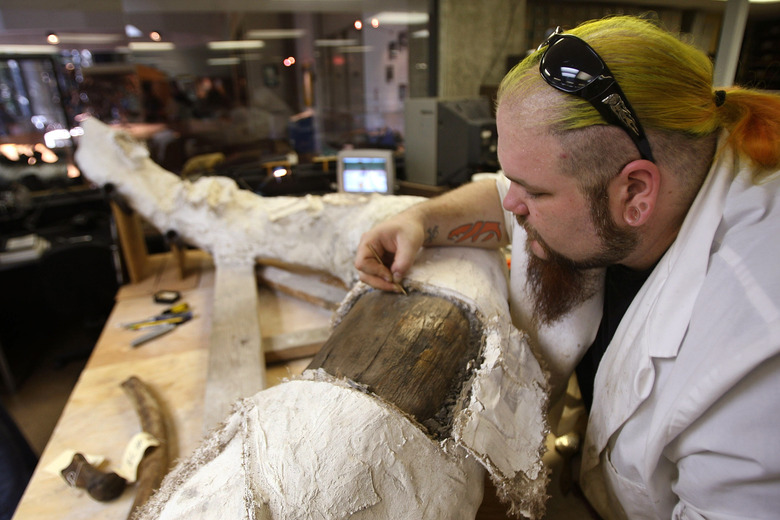Mold & Cast Fossils
Under certain conditions, living things can leave behind impressions of themselves in the form of fossils. Fossils are the remains or impressions of organisms, preserved in petrified molds or casts. They are particularly useful to biologists who can use them to discover extinct animal species, and and study the way that those animals evolved and lived. Certain kinds of fossils can be referred to as "molds" or "casts" due to the way they have formed.
Definition and Formation
Definition and Formation
Molds and casts are three-dimensional impressions in which the surface contours of an organism are preserved. Organisms buried in sediment slowly decompose, leaving a cavity that contains an exact imprint of the organisms' shape and size. When this hollow space fills with material, this material takes the shape of the mold, forming a cast. Although the fossil may exhibit characteristics of the original organism, normally no organic material remains.
After the remains of the organism decompose and the surrounding sediment hardens, water filters through the sediment, leaching out the organic remains and leaving a void containing a detailed structure of the organism called a negative or external imprint. The rare fossil casts form when a mold fills with material, such as sediments or soluble minerals, and creates a replica of the original organism. A cast can be compared to putting Jell-o into a mold and letting it set; the removed form is a cast of the mold.
Properties of Fossils
Properties of Fossils
Usually molds and casts exhibit a distinct three-dimensional character. Occasionally, inorganic material replaces the shell of an organism, leaving an impression of the interior surface called an internal mold. When this mold fills with soluble minerals, it forms an internal cast, called a steinkern, which means "stone cast" in German. According to the Petrified Wood Museum, the most common steinkern for plants includes the preserved details of the vascular and cortex tissue within the plants' pith (the outside surface cavities of the center stem).
Uses of Fossils
Uses of Fossils
Traces of extinct organisms, such as burrows, shells, plants, trails and tracks, represent a type of fossil mold or cast if the three-dimensional integrity is preserved. Molds and casts that faithfully replicate the external form of an organism provide paleontologists clues about the surface anatomy and behavior of an ancient organism. According to The Petrified Wood Museum, a common fossil mold includes insect wing impressions. By studying the preserved pleating on the wings, paleontologists identify the insect family.
Safely Displaying Fossils
Safely Displaying Fossils
Museums make plaster of Paris or fiberglass casts of fossils to preserve the original fossil for study. Paleontologists also use casts for study if the original fossil is too fragile. When the weight of the fossil makes mounting of the original impractical, copies are used for display purposes. Museum educational programs use fossil casts that allow students to handle and examine the bones from different angles.
Cite This Article
MLA
Parrott, Suzanne Fyhrie. "Mold & Cast Fossils" sciencing.com, https://www.sciencing.com/mold-cast-fossils-6556194/. 23 April 2018.
APA
Parrott, Suzanne Fyhrie. (2018, April 23). Mold & Cast Fossils. sciencing.com. Retrieved from https://www.sciencing.com/mold-cast-fossils-6556194/
Chicago
Parrott, Suzanne Fyhrie. Mold & Cast Fossils last modified March 24, 2022. https://www.sciencing.com/mold-cast-fossils-6556194/



